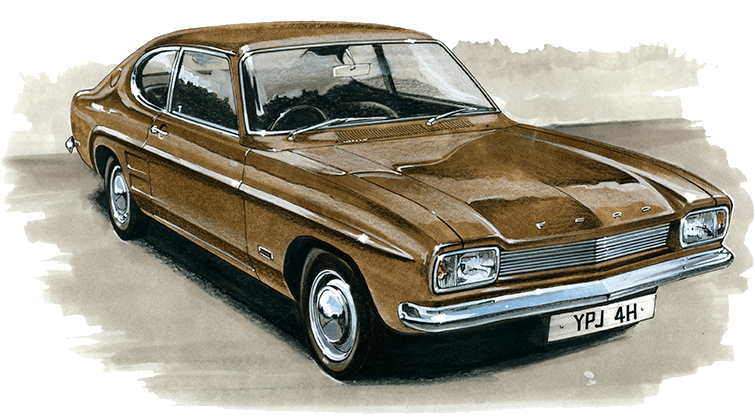
Introduced in 1969, the Ford Capri quickly established itself as a popular sports coupe, known for its sleek design and impressive performance. However, to truly understand the Capri’s standing in terms of performance, it is essential to examine how it compared to its contemporaries.
One of the Capri’s main competitors during its heyday was none other than the legendary Chevrolet Camaro. Both vehicles boasted powerful engines and were designed to appeal to the performance-oriented market. However, the Capri had a slight edge in terms of overall performance. While the Camaro offered a range of engine options, including some high-performance variants, the Capri’s European heritage gave it a more balanced and agile driving experience.
Another noteworthy competitor to the Capri was the Pontiac Firebird. Similar to the Camaro, the Firebird offered various engine options and represented American muscle at its peak. Nevertheless, the Capri’s handling prowess and nimble characteristics gave it an advantage over the Firebird, particularly when it came to cornering and maneuverability.
When compared to its European counterparts, such as the Opel Manta and BMW 3 Series, the Capri stood out for its affordability without compromising on performance. The Opel Manta, although a close cousin to the Capri, struggled to match its sporty appeal. On the other hand, the BMW 3 Series offered a more refined driving experience but came with a significantly higher price tag.
One of the key factors that contributed to the Capri’s competitive performance was its wide range of engine options. Buyers had the choice of a variety of engines, ranging from smaller yet efficient options to larger and more powerful ones, catering to different driving preferences. This diversity meant that individuals could find the perfect Capri variant that matched their desired level of performance.
In terms of acceleration, the Capri performed admirably. With the optional V6 engine, it could sprint from 0 to 60 mph in just under 10 seconds, an impressive feat for a car of its time. The top-of-the-line Capri RS3100, equipped with a 3.1-liter V6 engine, boasted a top speed of around 120 mph, placing it on par with some of the more potent muscle cars of its era.
Overall, the Capri excelled in its performance when compared to both American and European competitors. Its combination of attractive design, well-balanced handling, and a range of powerful engine options made it a force to be reckoned with on the sports coupe market. It offered a unique blend of European performance and affordability that those seeking an exhilarating and fun-driving experience were drawn to.
While the Capri may no longer be in production, its significance and impact on the automotive industry remain undeniable. It paved the way for future sports cars, leaving behind a legacy of performance and style that continues to inspire car enthusiasts to this day.